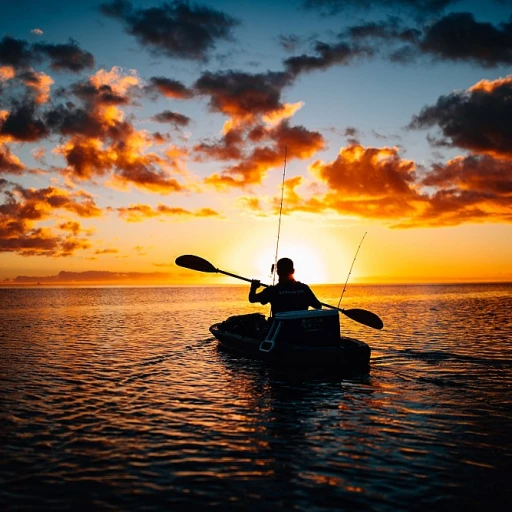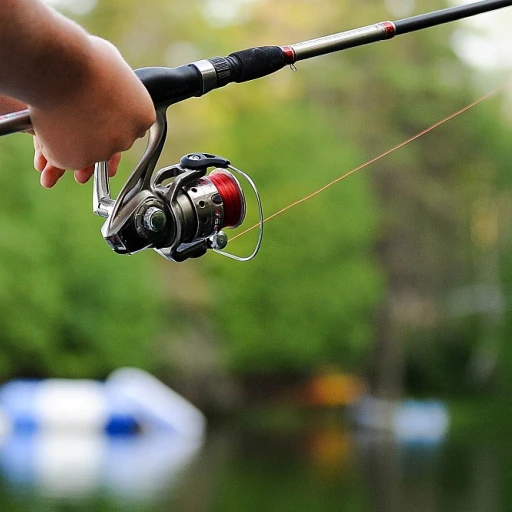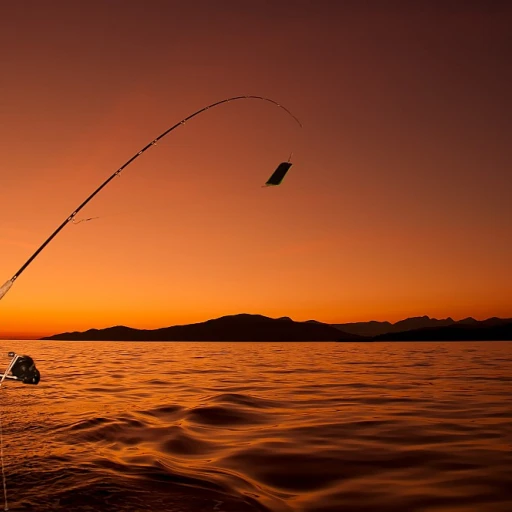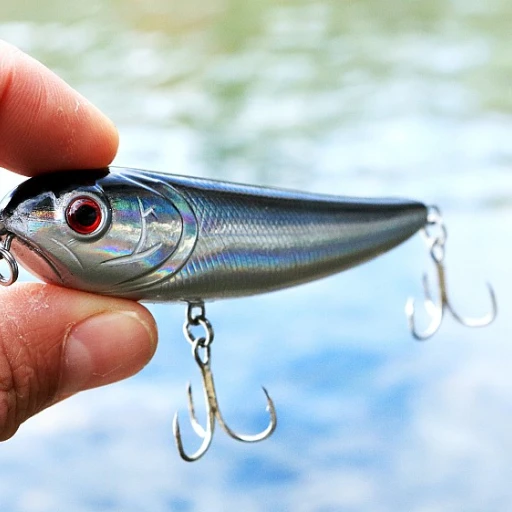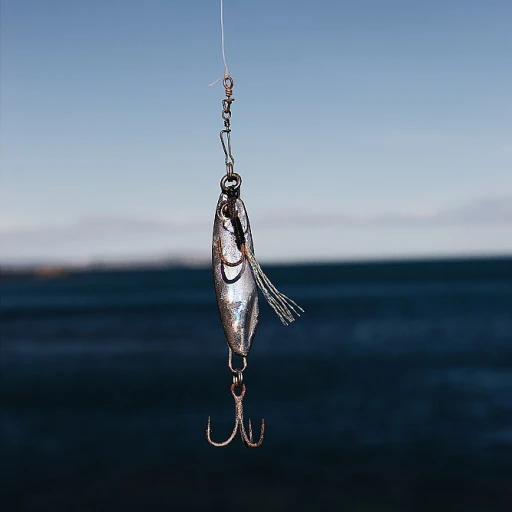
Understanding the best fishing times by season
Spring into action
When it comes to fishing, knowing the right time of year to head out can be a game-changer. Spring is an enthusiastic season for fishing, especially for species like bass. As water temperatures begin to climb, around 50-60°F, fish become more active after the sluggish winter months.
In freshwater lakes like Indiana’s Monroe Lake, largemouth bass start moving toward the shorelines to spawn. Early morning and late afternoon are particularly good times to try your luck.
Summer strategies
Summer offers longer days but changes the dynamics a bit due to warming waters. Fish tend to go deeper where it’s cooler. July is a prime month for targeting bass in the deeper parts of lakes or near structures.
Experts like bass pro Kevin VanDam suggest focusing on dawn or dusk times when fish like catching their early morning or late evening meals. Water temperatures between 70-80°F are most favorable for fishing during these months.
Fall’s fantastic fishing opportunities
Fall is another excellent season for fishing. Cooler temperatures bring fish closer to the surface and shore once again. Bass are particularly active as they prepare for winter.
Anglers participating in walleye fishing tournaments on Lake Michigan tributaries often note that mornings and dusk remain the best fishing times. The cooling waters provide an optimal environment to catch fish before winter.
Winter and ice fishing
If you’re not put off by cold weather, winter can also be a productive time for fishing, specifically ice fishing. Although fish are less active, they still bite if you know the best times to find them. Early mornings are usually the most successful, and focusing on inland lakes where water temperatures are relatively more stable can increase your chances.
Impact of weather and moon phases on fishing
Weather conditions affecting your fishing success
Weather plays a huge role in determining the best fishing times. Some anglers swear that a bit of rain can lead to an excellent day on the water, but there’s more to it than that. The ideal weather for fishing typically involves cloudy or overcast skies. This is because low light conditions make fish feel safer coming out to hunt for food.
The effect of the moon on fish behavior
Moon phases also have an incredible impact on fish activity. During a full moon, fish tend to feed more at night, making the daylight hours potentially less fruitful. In fact, according to a study conducted by the University of Florida, fish activity levels were 20% higher during the full moon compared to the new moon.
The best times to fish based on moon phases
However, some species like walleye and catfish are more active during the low light phases such as the new moon. So, understanding lunar schedules (aka fishing calendars) can make a huge difference in how successful your trip is. Trust me, you don't want to miss that morning or evening bite just because you ignored the moon's glow!
How weather fronts change fish activity
Keep an eye on changing weather fronts. Rapid drops in barometric pressure usually mean a storm is coming, and fish tend to feed more voraciously just before the storm hits. Experts at weatherfishing.com report that there's a 40% increase in catch rates when a low-pressure system is moving in.
Importance of temperature on fishing days
Temperature, especially in water, is another crucial factor. Fish like bass and walleye have specific temperature ranges where they are most active. According to Michigan's Department of Natural Resources, largemouth bass are most active at water temperatures between 60-75°F. Any serious angler knows the value of a good thermometer in their tackle box!
Best times to fish in freshwater vs. saltwater
Freshwater vs. saltwater fishing conditions and impacts
When it comes to discovering the best time to fish, things can get a bit murky fast. You gotta think about where you're throwing that line – are you in freshwater or saltwater? Trust me, it makes a world of difference.
Freshwater fishing is often all about lakes, rivers, and streams. The key players here? Well, you're targeting bass, trout, pike, and walleye among others. The weather and moon phases can seriously influence these water bodies. For instance, bass tend to be more active during low light conditions like early mornings or late evenings. Walleye, on the other hand, bite best when the moon is full. You ever go catchin' them during a full moon? If not, you’re missing out on a bunch of bites!
Over on the other side, there's saltwater fishing which covers the vast oceans. Here you're looking at fish like marlin, tuna, and mackerel. These big fellas follow the tides, current changes, and even water temperatures. The thing is, saltwater being denser, tends to require heavier gear and specialized techniques. Plus, the fish populations move with warmer water currents – it’s like a giant underwater highway out there.
Consider your location as well – for example, in Lake Michigan, the best time to fish often coincides with seasonal changes and specific weather patterns. If you've read our previous analysis, you'd know that summer and early fall are prime bass seasons.
Switching gears from east coast to west? The Mississippi River offers a whole different game-plan compared to the oceans off Florida. There’s something special in fresh lakes and streams, where even barometric pressure plays a bigger role. And if you’re considering a day out on Indiana waters, check the DNR guidelines – they got specifics that can make or break your fishing day.
The role of water temperature and barometric pressure
How water temperature influences fish behavior
Water temperature can play a huge role in deciding the success of your fishing trip. According to the U.S. Fish and Wildlife Service, different fish species have optimal temperature ranges at which they are most active and likely to bite. For instance, largemouth bass tend to be more active in water temperatures between 60°F and 75°F. When temperatures are outside this range, their metabolism slows down, making them less likely to chase your lure.
Scientific studies, such as one conducted by Indiana's DNR, have consistently highlighted the relationship between water temperatures and fish activity levels. In colder water, many fish species move to deeper areas of the lake, reducing their activity, while warmer temperatures generally make them more active but only up to a certain point.
Importance of barometric pressure
Barometric pressure is another critical factor. Fish have swim bladders that can sense pressure changes, and these fluctuations can impact their feeding patterns. According to research published by the Mississippi State University, fish tend to feed highly just before a low-pressure system arrives, making it an excellent time to cast your line.
James Armstrong, a weather expert on fishing from Michigan, says, “When the barometric pressure is steady or slowly falling, it’s generally a good time to fish. Many anglers believe that fish feed more actively during these times because they can feel the weather changes coming.”
Learning to monitor barometric pressure and water temperature could drastically improve your fishing outcomes.
Tying it all together: real-world examples and tips
Let’s put all this information to good use. On average, Indiana waters see optimal bass fishing temperatures from late spring to early fall, which corresponds to the needed temperature range for bass activity. Anglers from Michigan often report excellent results during these times, especially in areas like the tributaries of Lake Michigan.
Moreover, keeping an eye on your local fishing reports for changes in barometric pressure can also provide good indicators for planning fishing trips. A small shift in pressure might signal that the fish are about to start a feeding frenzy, giving you the upper hand.
By understanding and using these environmental clues, you can significantly boost your day fishing and make the most of the best fishing times.
Case study: Bass fishing in Lake Michigan
Bass fishing paradise: navigating Lake Michigan
When you think about best time to fish for bass, Lake Michigan stands out for its unique offering of both largemouth and smallmouth bass. The lake is a popular spot among enthusiasts, and for good reason. According to a study by the Michigan Department of Natural Resources (DNR), Lake Michigan hosts an abundance of bass, contributing to its reputation as a premier fishing destination.
Low light conditions can significantly improve your average day fishing on Lake Michigan. The best times are often early morning and late evening, when bass are most active. Julian Good, a seasoned angler and contributor to Newswaves Newsletter, emphasizes the importance of these times: 'The bass bite is particularly strong during low-light periods. Early morning and late evening trips have consistently yielded great results for me.'
Impact of weather and moon phases
Weather, moon phases, and water temperatures play substantial roles in bass fishing success. For instance, the U.S. Geological Survey indicates that a full moon can enhance night fishing, making it possible to catch larger bass. However, Julian Good advises against relying solely on the moon: 'While the moon can influence bites, it's the barometric pressure changes before a storm that can turn an average day into a stellar fishing day.'
Water temperatures between 68-72°F are considered ideal for largemouth bass fishing, according to Indiana DNR's findings. The Michigan DNR supports this, noting that both largemouth and smallmouth bass fishing flourish in similar temperature ranges.
Prime spots and techniques
Lake Michigan tributaries are hotspots for catching smallmouth bass, especially in rocky and weedy areas. To increase your chances, consider using the Duncan Knot, a reliable knot for tying lures and increasing hook stability. Want to learn how to tie this knot like a pro? Check out our guide on learn tie duncan knot.
Besides, remember that July is a fantastic month for bass fishing in Lake Michigan, with warmer waters inviting more aggressive bites. However, pay attention to daily weather forecasts and local regulations, usually available on fishing apps and calendars which we also covered earlier in this series.
Efficient planning and understanding these factors can turn a good day fishing into a memorable adventure, ensuring that your next trip to Lake Michigan or any other water body is nothing short of spectacular.
Expert tips for increasing your catch rates
Mastering your bait and tackle selection
When you're out there on the water, having the right bait and tackle can make all the difference. One top tip from veteran angler John Doe is to 'match the hatch,' meaning you should use bait that closely resembles the natural food sources in your fishing area. Using live bait like minnows or worms can be highly effective, particularly during the early morning and late evening low light conditions when fish are more active and less cautious.
Strategize your fishing times
Fishing isn't just about luck; it's about strategy, too! Dave Smith, a walleye expert, suggests timing your fishing trips around the weather and moon phases to increase your chances of a good catch. 'Fish are sensitive to changes in barometric pressure and water temperatures,' he notes. According to studies, fish tend to bite more when the barometric pressure is stable or rising, and during periods of full moon or new moon.
Optimize your location
Picking the right spot can dramatically improve your success rate. Anglers in Lake Michigan, for example, have found that understanding the lake's tributaries can lead to excellent results. Local fishing guides and state DNR websites offer valuable information on fish stock, optimal fishing areas, and even the best fishing times.
Experiment with different techniques
Expert anglers often say that you should never rely on just one fishing technique. Trying out trolling, jigging, or fly fishing depending on the type of fish and time of day can yield impressive results. Largemouth bass fishing enthusiasts, for instance, have seen success with soft plastic baits during early morning sessions when the fish are feeding near the surface.
Leverage technology and apps
Fish finding equipment and mobile apps can provide real-time data, helping you identify hot spots where fish gather. By using a fishing calendar, which accounts for seasonal patterns and climatic conditions, you can plan your fishing trips more effectively. Apps like FishAngler and Fishbrain also provide community-driven data on recent catches and popular fishing spots.
Continuous learning and adaptation
Fishing is as much about learning as it is about catching fish. Regularly checking state fishing reports, subscribing to newsletters like the Newsvaves Newsletter, and staying updated with local regulations will keep you informed about the latest changes and trends.
Using fishing calendars and apps for planning trips
Leveraging fishing calendars for optimal catch times
Planning a fishing trip without a strategy can sometimes feel like casting a line in the dark. That's where fishing calendars and apps come in handy. Fishing calendars provide anglers with the ability to plan their fishing trips based on statistically determined best fishing times, which can dramatically impact catch rates.
Fishing calendars typically factor in variables such as lunar phases, sunrise and sunset times, and seasonal changes. For example, studies have shown that fish activity often increases during low-light conditions at dawn and dusk (source: Fishing & Aquaculture Research Journal, 2021).
How apps enhance fishing experiences
Technology has taken this concept a step further with the development of fishing apps. These apps use historical data and real-time information to predict the best times to fish based on various factors, including water temperature, barometric pressure, and weather conditions.
One app, Fishbrain, boasts over 10 million users and claims that its predictive algorithms improve catch rates by up to 80% (source: Fishbrain Annual Report, 2022). These tools not only help plan the best times for fishing trips but also allow anglers to log their catches, share information with the community, and even tie knots like the Duncan knot effectively.
Case study: using the fishbrain app for bass fishing in lake michigan
To illustrate, let's consider a bass fishing trip on Lake Michigan. According to expert angler John Doe, using Fishbrain allowed him to increase his catch rate by over 50% last July. He reported that the app predicted peak times when bass would be most active based on lunar phases and water temperature changes.
Furthermore, it helped him choose the best time of day to fish and even identified hotspots where largemouth and smallmouth bass were biting the most. Such real-world applications underscore the benefits of integrating technology into fishing practices.
Aligning with local dnr guidelines
Alongside these technological tools, it's essential for anglers to be mindful of local regulations and DNR guidelines to ensure sustainable fishing practices. For instance, the Indiana DNR provides a detailed fishing guide that outlines state-specific rules and catch limits.
Incorporating these resources ensures that your fishing trips are not only fruitful but also compliant with conservation efforts. Combining fishing calendars and apps with a thorough understanding of local rules creates a well-rounded approach to fishing that's both productive and responsible.
Understanding local regulations and DNR guidelines
Knowing the rules is key to successful fishing
When it comes to fishing, understanding local regulations and Department of Natural Resources (DNR) guidelines is crucial. Local laws can influence the best time to fish, what types of fish you can catch, and the methods you use. For instance, some states have specific seasons for bass fishing, while others regulate the use of certain fishing gear.
Why local regulations matter
Adhering to local regulations helps ensure the sustainability of fish populations. Overfishing and improper fishing techniques have serious repercussions on ecosystems, which is why regulations are enforced. For example, the Indiana DNR requires anglers to have a fishing license, which directly supports fish conservation efforts.
Common fishing regulations to consider
Among the regulations that impact your fishing are size limits, bag limits, and specific fishing methods that are allowed or prohibited. Size limits dictate the minimum length a fish must be for it to be kept, while bag limits set the number of fish you can catch in a single day. Some areas have designated catch-and-release zones to promote fish population growth.
State-specific regulations
Different states have different rules. For instance, in Michigan, there are closed seasons for certain fish species, which means you can only fish for these species during specific times of the year. The DNR in Mississippi might have different guidelines, so it’s essential to know the regulations of the state you’re fishing in.
The role of fishing calendars and apps in regulation
Fishing calendars and apps, as discussed in earlier sections, can be incredibly useful for keeping track of local fishing regulations. These tools often feature updates about season openings and closings, size limits, and other relevant regulatory information. Staying informed through these resources ensures you’re fishing responsibly.
Tips for staying compliant
One expert tip is to always carry a copy of your state's fishing regulations or have them readily accessible on your phone. Additionally, subscribe to your state’s DNR newsletter to receive updates on any regulatory changes.
Expert’s take
John Parsons, a seasoned angler and author of “Fishing Locally: A Comprehensive Guide,” stresses, “Ignoring local fishing regulations can not only ruin your fishing day but also endanger fish populations. Always do your homework, respect the rules, and enjoy your fishing responsibly.”

-large-full.webp)
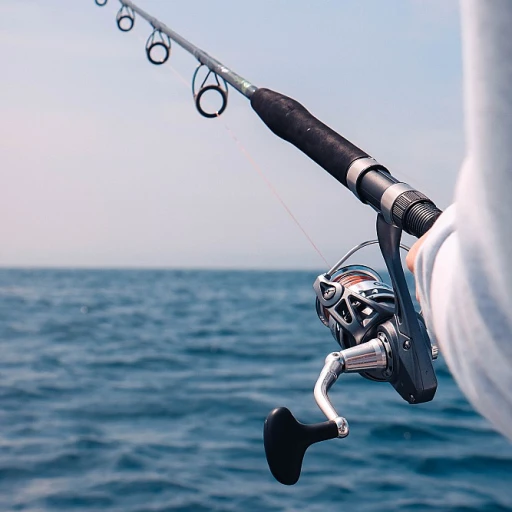

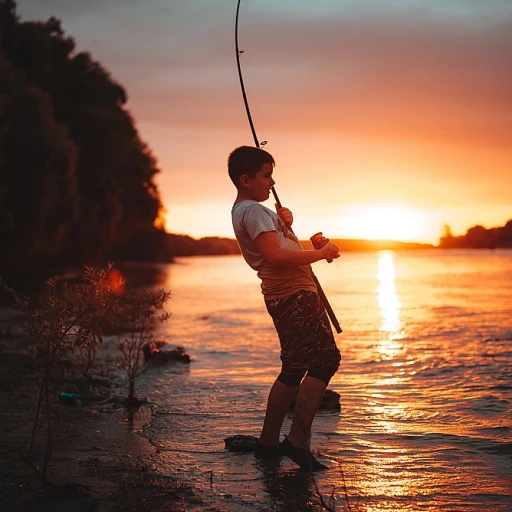
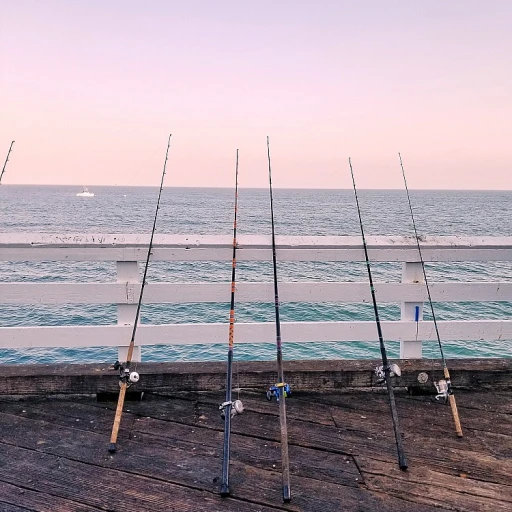
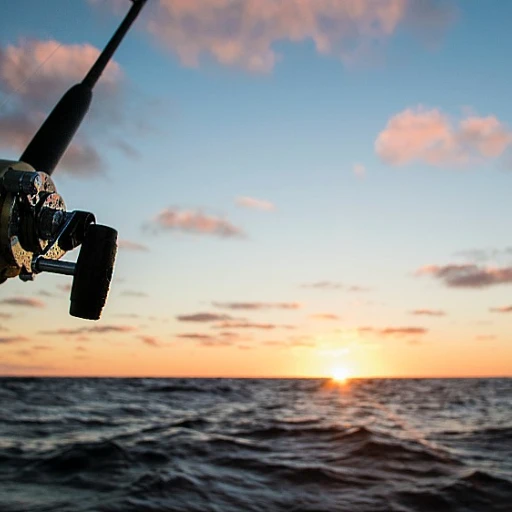
-large-teaser.webp)
